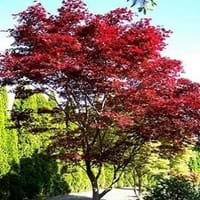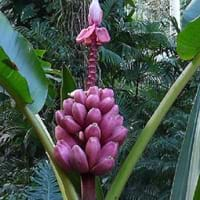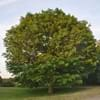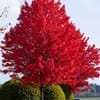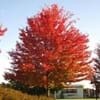Life Span
Perennial
Perennial
Type
Tree
Flowering Plants, Fruits, Herbs
Origin
Eastern Asia
Central America, West Indies
Types
Not Available
Not Available
Habitat
Forest margins, gardens, Suburban areas, Woods
Open areas, Open Plains
USDA Hardiness Zone
6-8
8-11
AHS Heat Zone
8-2
Not Available
Sunset Zone
A3, 2a, 2b, 3a, 3b, 4, 5, 6, 7, 8, 9, 10, 12, 14, 15, 16, 17, 18, 19, 20, 21, 22, 23, 24
Not Available
Habit
Oval or Rounded
Upright/Erect
Flower Color
Red
Red, Reddish Plum, Rose
Flower Color Modifier
Bicolor
Bicolor
Fruit Color
Red, Green, Brown
Red, Rose, Tan
Leaf Color in Spring
Burgundy, Dark Red
Sea Green, Gray Green
Leaf Color in Summer
Burgundy, Dark Red
Sea Green, Gray Green
Leaf Color in Fall
Red, Burgundy, Dark Red
Sea Green, Gray Green
Leaf Color in Winter
Not Available
Sea Green, Gray Green
Leaf Shape
Maple shaped
Cone shaped
Plant Season
Spring, Summer, Fall, Winter
Fall, Spring, Summer
Sunlight
Partial Sun, Partial shade
Full Sun, Partial shade
Type of Soil
Loam, Sand
Clay, Loamy
The pH of Soil
Acidic, Neutral, Alkaline
Neutral, Slightly Acidic
Soil Drainage
Average
Well drained
Bloom Time
Spring
Early Fall, Early Summer, Late Spring, Late Summer, Summer
Tolerances
Not Available
Not Available
Where to Plant?
Ground
Ground
How to Plant?
Grafting, Seedlings, Transplanting
From bulbs, From Rhizomes, Seedlings
Plant Maintenance
Medium
Medium
Watering Requirements
Needs watering once a week, Requires watering in the growing season
Allow soil to be completely dry in between waterings, It cannot sustain wet-feet, Requires regular watering, Water every two or three days during warmer months
In Summer
Lots of watering
Lots of watering
In Spring
Moderate
Moderate
In Winter
Average Water
Average Water
Soil pH
Acidic, Neutral, Alkaline
Neutral, Slightly Acidic
Soil Type
Loam, Sand
Clay, Loamy
Soil Drainage Capacity
Average
Well drained
Sun Exposure
Partial Sun, Partial shade
Full Sun, Partial shade
Pruning
Prune if you want to improve plant shape, Prune in winter, Prune to stimulate growth, Remove damaged leaves, Remove dead leaves, Remove deadheads
Prune after harvesting, Remove dead or diseased plant parts
Fertilizers
All-Purpose Liquid Fertilizer
All-Purpose Liquid Fertilizer
Pests and Diseases
Fungal Diseases
Anthracnose, Banana aphid, Banana mosaic, Black sigatoka, Bunchy top, Cigar end rot, Coconut scale, Moko disease, Panama disease, Rhizome rot, Yellow sigatoka
Plant Tolerance
Drought
Drought
Flowers
Insignificant
Yes
Flower Petal Number
Single
Single
Foliage Texture
Fine
Bold
Foliage Sheen
Matte
Glossy
Attracts
Not Available
Not Available
Allergy
Asthma
Hives, Itchiness, Swelling, Throat itching, wheezing
Aesthetic Uses
Showy Purposes
Not Used For Aesthetic Purpose
Beauty Benefits
Not Available
Not Available
Environmental Uses
Air purification
Air purification
Medicinal Uses
Sore Eyes
Fiber, Hair Loss, Kidney Stones, Piles, Vitamin C
Part of Plant Used
Bark, Sap
Fruits, Leaves
Other Uses
Grown for shade, Used in Furniture, Used in making musical instruments
Used as Ornamental plant, Used for its medicinal properties, Used in herbal medicines
Used As Indoor Plant
No
No
Used As Outdoor Plant
Yes
Yes
Garden Design
Container, Feature Plant, Foundation, Mixed Border, Topiary / Bonsai / Espalier
Cutflower, Feature Plant, Foundation, Mixed Border, Screening / Wind Break, Tropical
Botanical Name
ACER palmatum 'Fireglow'
Musa acuminata
Common Name
Fireglow Japanese Maple, Japanese Maple
Red banana, Red Dacca bananas
In Hindi
Fireglow मेपल
लाल केला
In German
Fireglow Maple
Red Banana
In French
fireglow Maple
Red Banana
In Spanish
Fireglow arce
Red Banana
In Greek
Fireglow Maple
κόκκινο Μπανάνα
In Portuguese
Fireglow bordo
Banana vermelha
In Polish
fireglow Klon
Red Banana
In Latin
Viridis Maple
ARIERA Rubrum
Phylum
Angiosperms
Magnoliophyta
Class
Eudicotyledones
Liliopsida
Order
Sapindales
Zingiberales
Family
Aceraceae
Strelitziaceae
Clade
Angiosperms, Eudicots
Monocotyledonous
Tribe
Not Available
Not Available
Subfamily
Amaryllidoideae
Not Available
Number of Species
Not Available
Importance of Fireglow Maple and Red Banana
Want to have the most appropriate plant for your garden? You might want to know the importance of Fireglow Maple and Red Banana. Basically, these two plants vary in many aspects. Compare Fireglow Maple and Red Banana as they differ in many characteristics such as their life, care, benefits, facts, etc. Every gardener must at least have the slightest clue about the plants he wants to plant in his garden. Compare their benefits, which differ in many ways like facts and uses. The medicinal use of Fireglow Maple is Sore Eyes whereas of Red Banana is Fiber, Hair Loss, Kidney Stones, Piles and Vitamin C. Fireglow Maple has beauty benefits as follows: Not Available while Red Banana has beauty benefits as follows: Not Available.
Compare Facts of Fireglow Maple vs Red Banana
How to choose the best garden plant for your garden depending upon its facts? Here garden plant comparison will help you to solve this query. Compare the facts of Fireglow Maple vs Red Banana and know which one to choose. As garden plants have benefits and other uses, allergy is also a major drawback of plants for some people. Allergic reactions of Fireglow Maple are Asthma whereas of Red Banana have Hives, Itchiness, Swelling, Throat itching and wheezing respectively. Having a fruit bearing plant in your garden can be a plus point of your garden. Fireglow Maple has no showy fruits and Red Banana has showy fruits. Also Fireglow Maple is not flowering and Red Banana is flowering. You can compare Fireglow Maple and Red Banana facts and facts of other plants too.
